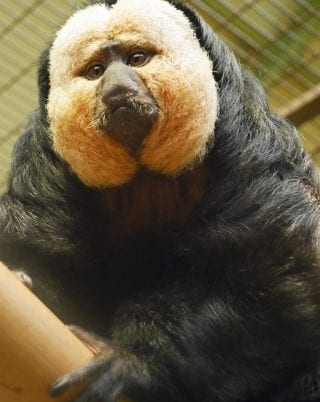Fun facts
Flying monkey
White-faced sakis are nicknamed ‘flying monkeys’ due to their ability to leap up to 10 meters from branch to branch.
Signature male trait
Only the males have the signature white faces. The female’s face is grey, brown or red.
Tail
The White-faced saki’s long tail is not prehensile like other monkeys. This means that they cannot use it to grab onto branches in the way that other monkeys do.

